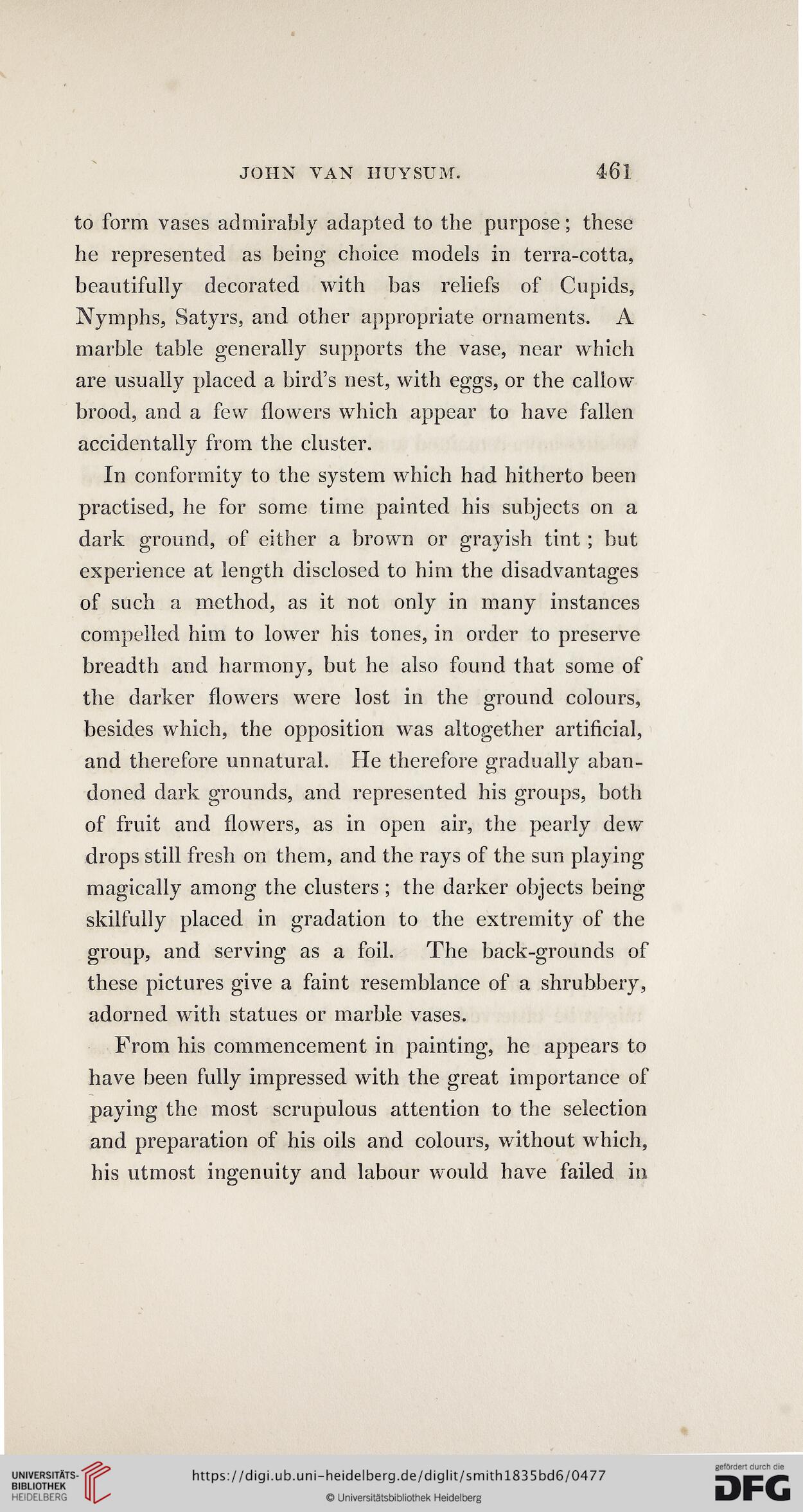JOHN VAN HUYSUM.
461
to form vases admirably adapted to the purpose; these
he represented as being choice models in terra-cotta,
beautifully decorated with bas reliefs of Cupids,
Nymphs, Satyrs, and other appropriate ornaments. A
marble table generally supports the vase, near which
are usually placed a bird’s nest, with eggs, or the callow
brood, and a few flowers which appear to have fallen
accidentally from the cluster.
In conformity to the system which had hitherto been
practised, he for some time painted his subjects on a
dark ground, of either a brown or grayish tint ; but
experience at length disclosed to him the disadvantages
of such a method, as it not only in many instances
compelled him to lower his tones, in order to preserve
breadth and harmony, but he also found that some of
the darker flowers were lost in the ground colours,
besides which, the opposition was altogether artificial,
and therefore unnatural. He therefore gradually aban-
doned dark grounds, and represented his groups, both
of fruit and flowers, as in open air, the pearly dew
drops still fresh on them, and the rays of the sun playing
magically among the clusters ; the darker objects being
skilfully placed in gradation to the extremity of the
group, and serving as a foil. The back-grounds of
these pictures give a faint resemblance of a shrubbery,
adorned with statues or marble vases.
From his commencement in painting, he appears to
have been fully impressed with the great importance of
paying the most scrupulous attention to the selection
and preparation of his oils and colours, without which,
his utmost ingenuity and labour would have failed in
461
to form vases admirably adapted to the purpose; these
he represented as being choice models in terra-cotta,
beautifully decorated with bas reliefs of Cupids,
Nymphs, Satyrs, and other appropriate ornaments. A
marble table generally supports the vase, near which
are usually placed a bird’s nest, with eggs, or the callow
brood, and a few flowers which appear to have fallen
accidentally from the cluster.
In conformity to the system which had hitherto been
practised, he for some time painted his subjects on a
dark ground, of either a brown or grayish tint ; but
experience at length disclosed to him the disadvantages
of such a method, as it not only in many instances
compelled him to lower his tones, in order to preserve
breadth and harmony, but he also found that some of
the darker flowers were lost in the ground colours,
besides which, the opposition was altogether artificial,
and therefore unnatural. He therefore gradually aban-
doned dark grounds, and represented his groups, both
of fruit and flowers, as in open air, the pearly dew
drops still fresh on them, and the rays of the sun playing
magically among the clusters ; the darker objects being
skilfully placed in gradation to the extremity of the
group, and serving as a foil. The back-grounds of
these pictures give a faint resemblance of a shrubbery,
adorned with statues or marble vases.
From his commencement in painting, he appears to
have been fully impressed with the great importance of
paying the most scrupulous attention to the selection
and preparation of his oils and colours, without which,
his utmost ingenuity and labour would have failed in




